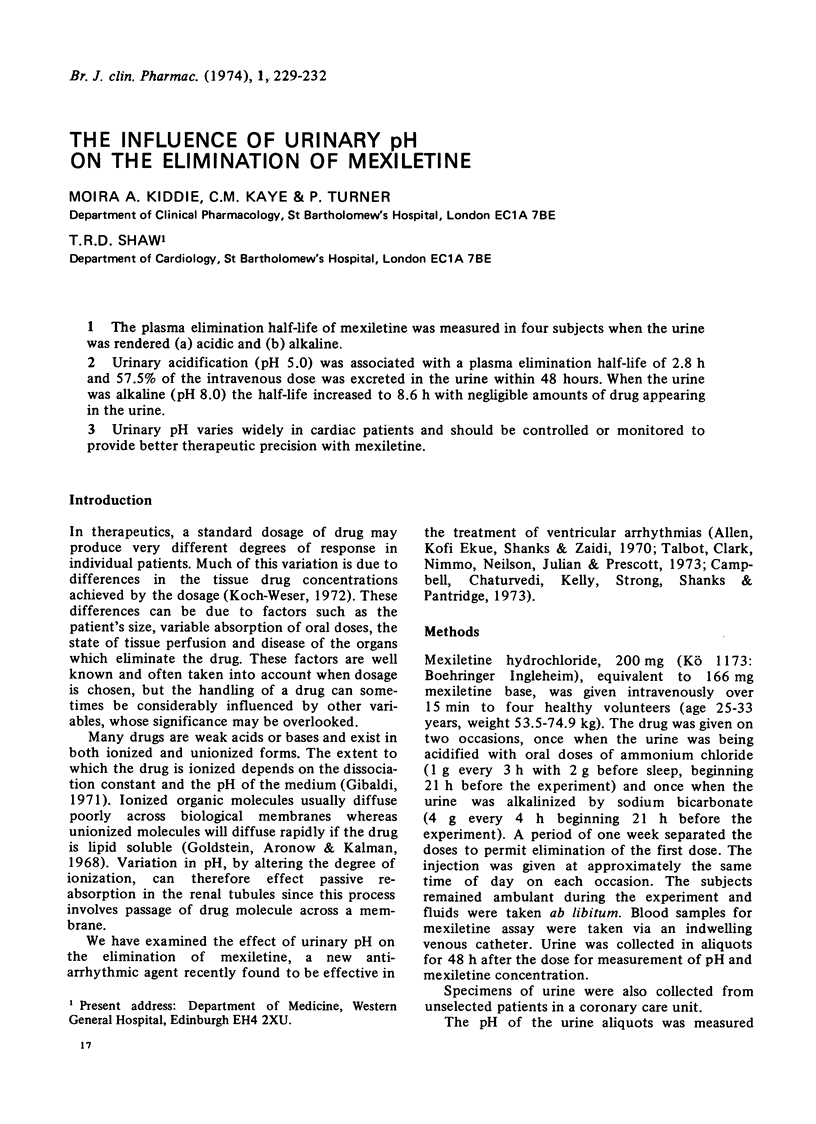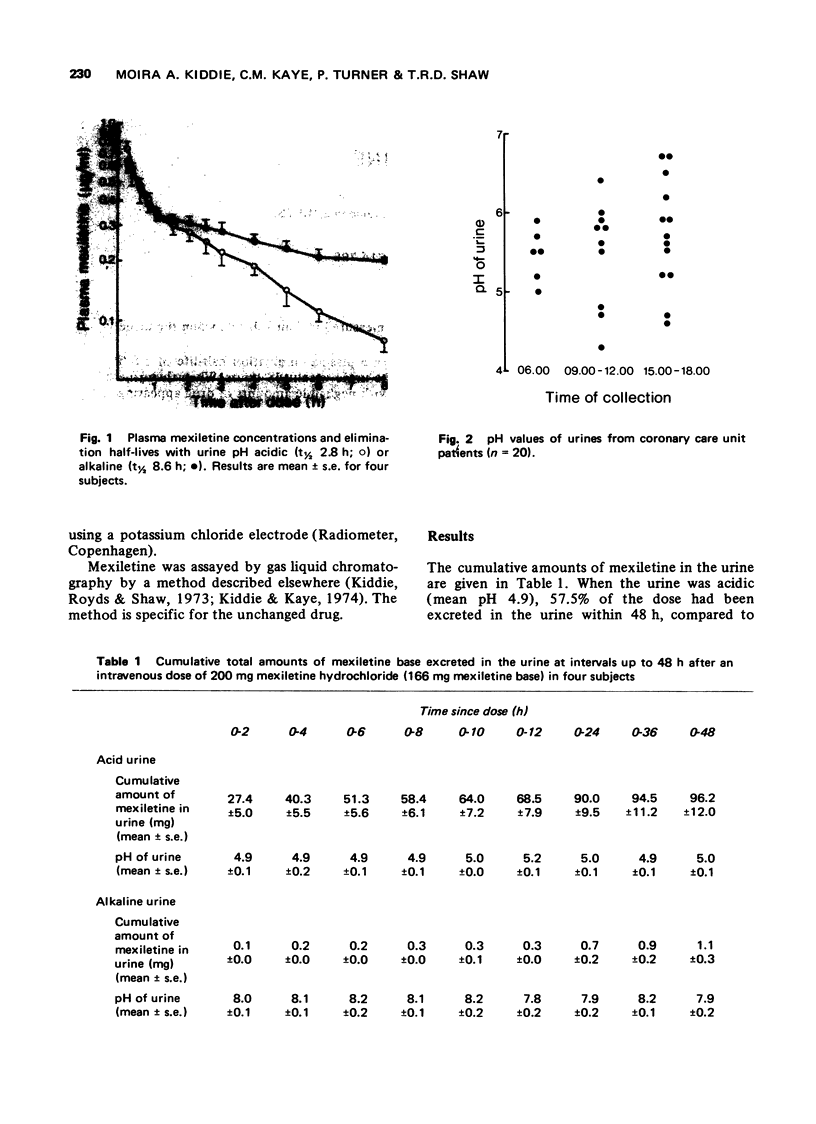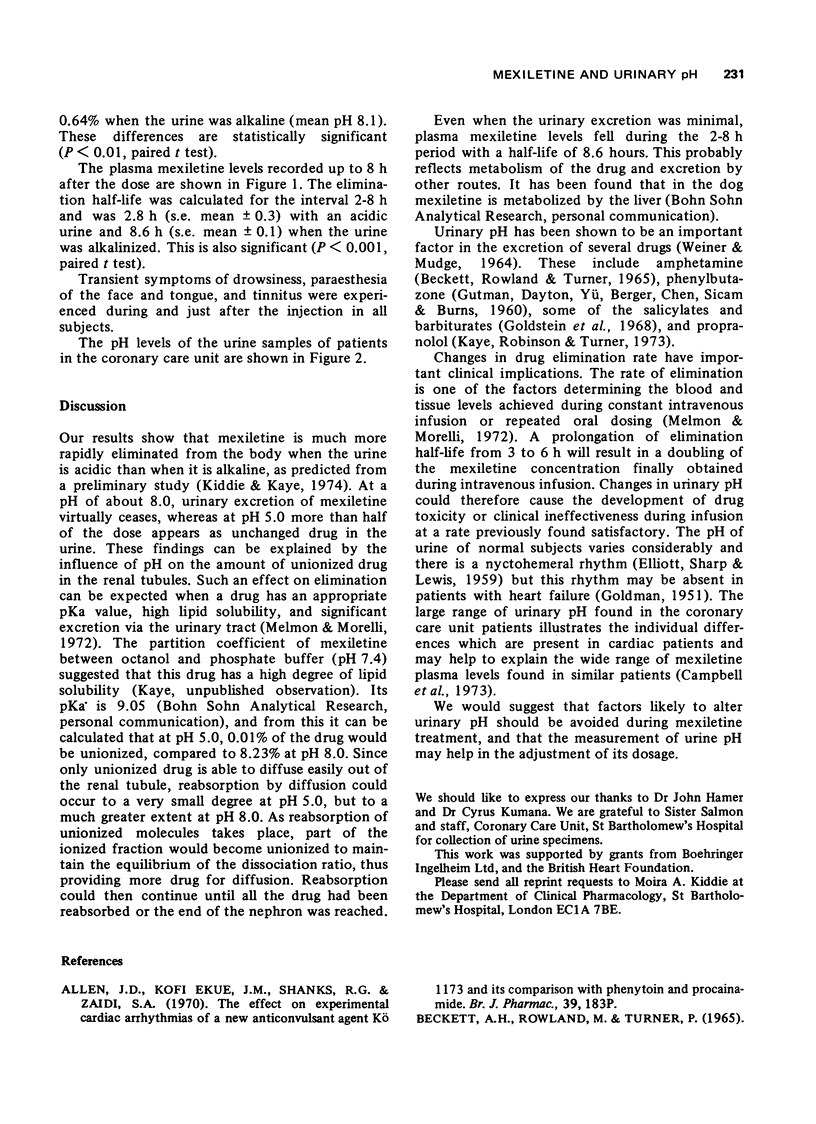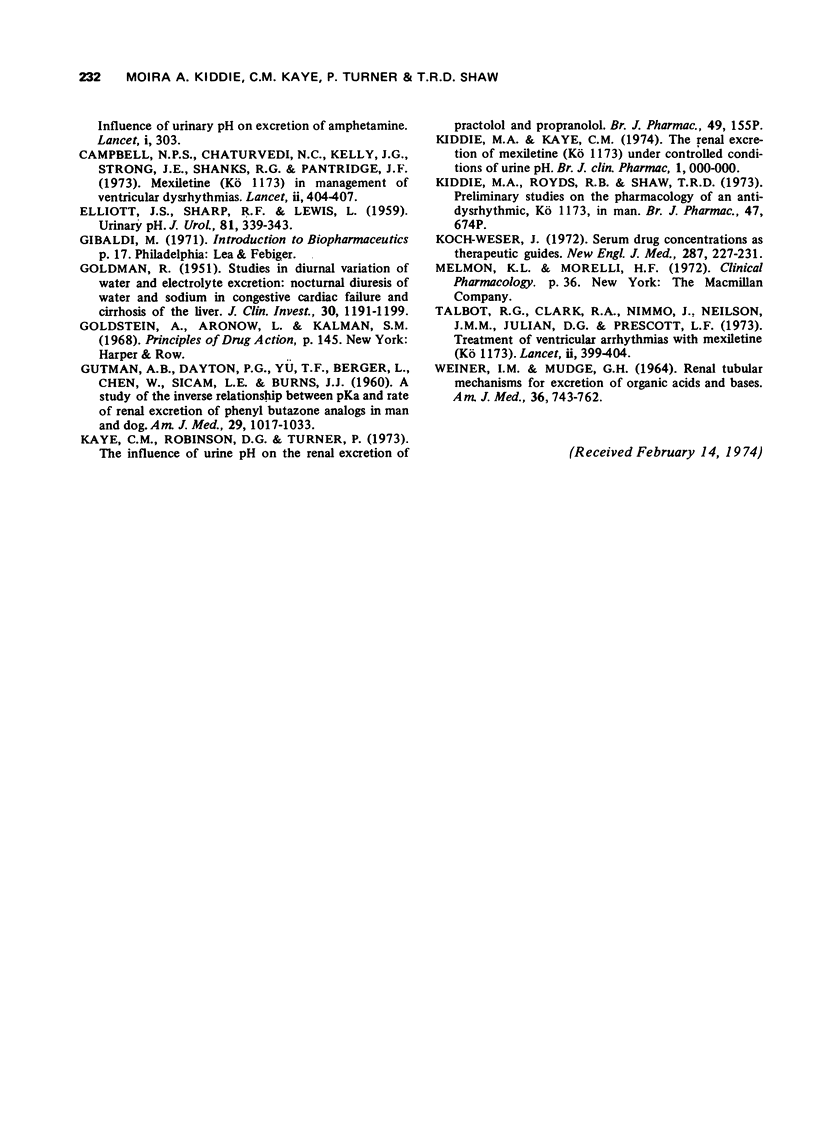Abstract
1 The plasma elimination half-life of mexiletine was measured in four subjects when the urine was rendered (a) acidic and (b) alkaline.
2 Urinary acidification (pH 5.0) was associated with a plasma elimination half-life of 2.8 h and 57.5% of the intravenous dose was excreted in the urine within 48 hours. When the urine was alkaline (pH 8.0) the half-life increased to 8.6 h with negligible amounts of drug appearing in the urine.
3 Urinary pH varies widely in cardiac patients and should be controlled or monitored to provide better therapeutic precision with mexiletine.
Full text
PDF



Selected References
These references are in PubMed. This may not be the complete list of references from this article.
- Allen J. D., Kofi J. M., Shanks R. G., Zaidi S. A. The effect of experimental cardiac arrhythmias of a new anticonvulsant agent, Kö 1173, and its comparison with phenytoin and procainamide. Br J Pharmacol. 1970 May;39(1):183P–184P. doi: 10.1111/j.1476-5381.1970.tb09568.x. [DOI] [PMC free article] [PubMed] [Google Scholar]
- BECKETT A. H., ROWLAND M., TURNER P. INFLUENCE OF URINARY PH ON EXCRETION OF AMPHETAMINE. Lancet. 1965 Feb 6;1(7380):303–303. doi: 10.1016/s0140-6736(65)91033-0. [DOI] [PubMed] [Google Scholar]
- Campbell N. P., Kelly J. G., Shanks R. G., Chaturvedi N. C., Strong J. E., Pantridge J. F. Mexiletine (Kö 1173) in the management of ventricular dysrhythmias. Lancet. 1973 Aug 25;2(7826):404–407. doi: 10.1016/s0140-6736(73)92271-x. [DOI] [PubMed] [Google Scholar]
- ELLIOT J. S., SHARP R. F., LEWIS L. Urinary pH. J Urol. 1959 Feb;81(2):339–343. doi: 10.1016/S0022-5347(17)66022-1. [DOI] [PubMed] [Google Scholar]
- GOLDMAN R. Studies in diurnal variation of water and electrolyte excretion; nocturnal diuresis of water and sodium in congestive cardiac failure and cirrhosis of the liver. J Clin Invest. 1951 Nov;30(11):1191–1199. doi: 10.1172/JCI102538. [DOI] [PMC free article] [PubMed] [Google Scholar]
- GUTMAN A. B., DAYTON P. G., YU T. F., BERGER L., CHEN W., SICAM L. E., BURNS J. J. A study of the inverse relationship between pKa and rate of renal excretion of phenylbutazone analogs in man and dog. Am J Med. 1960 Dec;29:1017–1033. doi: 10.1016/0002-9343(60)90082-6. [DOI] [PubMed] [Google Scholar]
- Kaye C. M., Robinson D. G., Turner P. Proceedings: The influence of urine pH on the renal excretion of practolol and propranolol. Br J Pharmacol. 1973 Sep;49(1):155P–156P. [PMC free article] [PubMed] [Google Scholar]
- Kiddie M. A., Royds R. B., Shaw T. R. Preliminary studies on the pharmacology of an antidysrhythmic, Kö 1173, in man. Br J Pharmacol. 1973 Mar;47(3):674P–675P. [PMC free article] [PubMed] [Google Scholar]
- Koch-Weser J. Drug therapy. Serum drug concentrations as therapeutic guides. N Engl J Med. 1972 Aug 3;287(5):227–231. doi: 10.1056/NEJM197208032870505. [DOI] [PubMed] [Google Scholar]
- WEINER I. M., MUDGE G. H. RENAL TUBULAR MECHANISMS FOR EXCRETION OF ORGANIC ACIDS AND BASES. Am J Med. 1964 May;36:743–762. doi: 10.1016/0002-9343(64)90183-4. [DOI] [PubMed] [Google Scholar]


